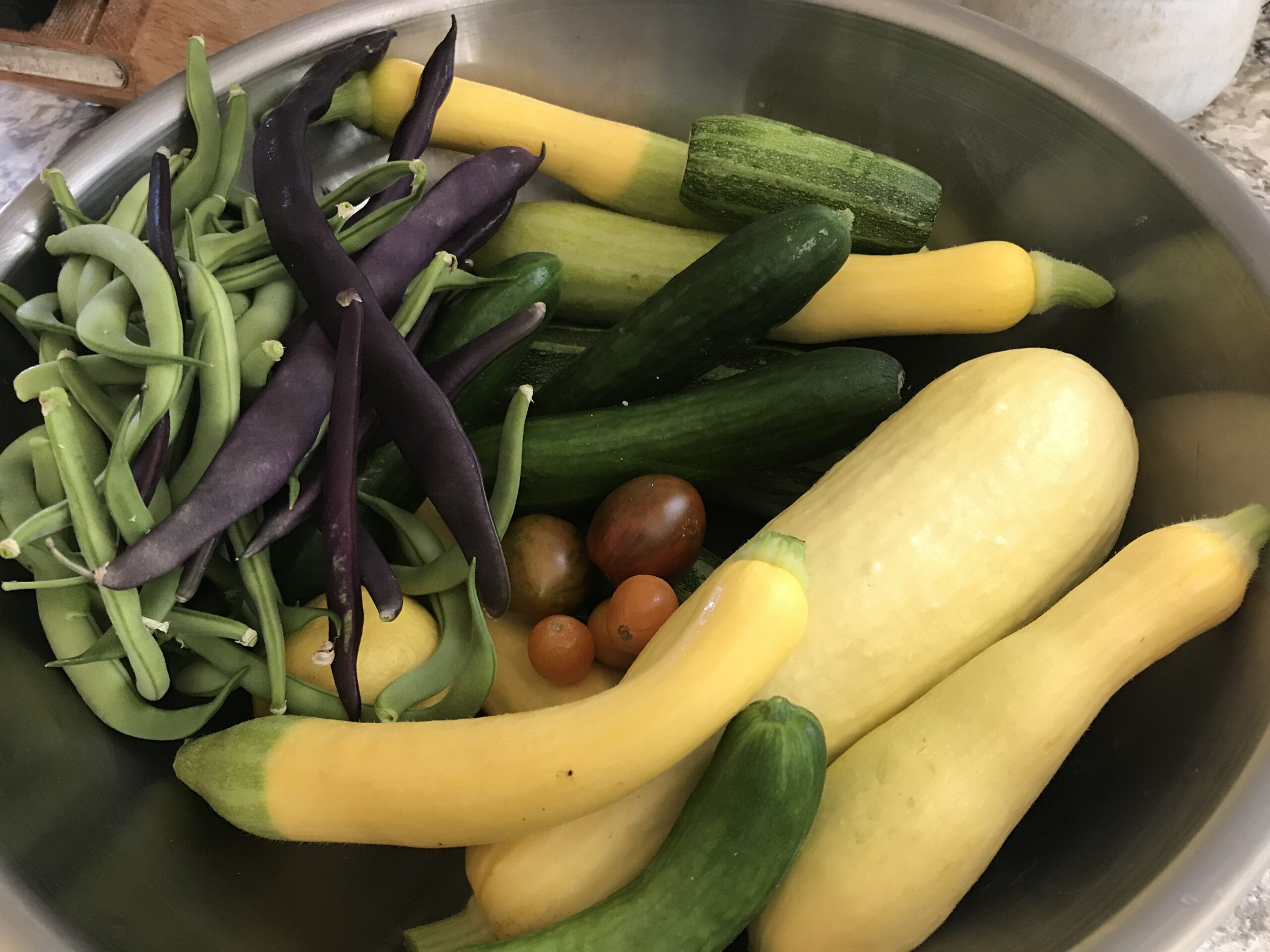
The horn of plenty begins to fill in July with delicious, naturally-grown vegetables. At my home, we are harvesting early tomatoes, bush beans, pole beans, cucumbers, and several squash varieties. The COVID-19 Victory veggies are off to a great start, and no pesticides or herbicides were used in their production.

Alternating hot and milder days in July can cause problems with fast-growing summer vegetables. I received a question and photo from a reader who was struggling with the tips of her squash turning brown and mushy. This is called Blossom End Rot (BER) and is caused by too little calcium in the young plant. When days are very hot, the squash (or tomatoes or peppers) grow too quickly for their own good.
Even if sufficient calcium is present in the soil or planting mix, the young plant cannot move enough of it to the growing end of its earliest fruit. So, the blossom end turns brown and mushy with rot. Most people think this is a watering issue, but it isn’t. When the plant is bigger and more mature, it can keep up with the calcium needs of its fruit and the BER goes away. DO NOT over-water your veggies or cut down on watering to cure BER. Regular but smaller doses of water are best. If the BER does not go away, try inserting a calcium-rich Tums or Rolaids tablet several inches deep into the plant’s roots.
Tomatoes also have fruit maturity issues. Plants tend to over-produce leaves and stems at the expense of fruit in hot July weather. This is especially true if they receive regular water and grow in nitrogen-rich planting soil (regular Contra Costa dirt is low in nitrogen). If you’re having trouble finding tomatoes in those dense leaves, try these three simple and eco-friendly techniques: 1) remove about 1/3 of the leaves to allow more sunlight into the pant interior, 2) change watering to 3 days per week but allow several minutes more watering time, 3) mix more native Contra Costa soil (clay!) into your tomato planting beds or patio pots.

Summer vegetables benefit a great deal from a 3-inch layer of mulch in and around the planting area. Wood chip mulch prevents water from evaporating into the air, making more water available for your veggies. Wood chips also attract and provide food for soil organisms, which are necessary to furnish nutrients to plant roots. Contact your favorite local tree-trimming service to check if they can provide chipped tree mulch to you for free. Just be careful to let the fresh mulch sit and dry out for a couple of weeks then wear a face covering while spreading it into your growing areas. The fumes and mold from wet mulch can cause a toxic reaction. Another great reason to wear a mask these days!
Remember that your friendly nursery and garden centers are open once again for business. Stay safe and wear a mask while garden shopping.
Thanks, Fran C. for your end rot question and photos. Email your comments and questions to: NakedGardener@diablogazette.com. In some cases these may appear in future columns.

